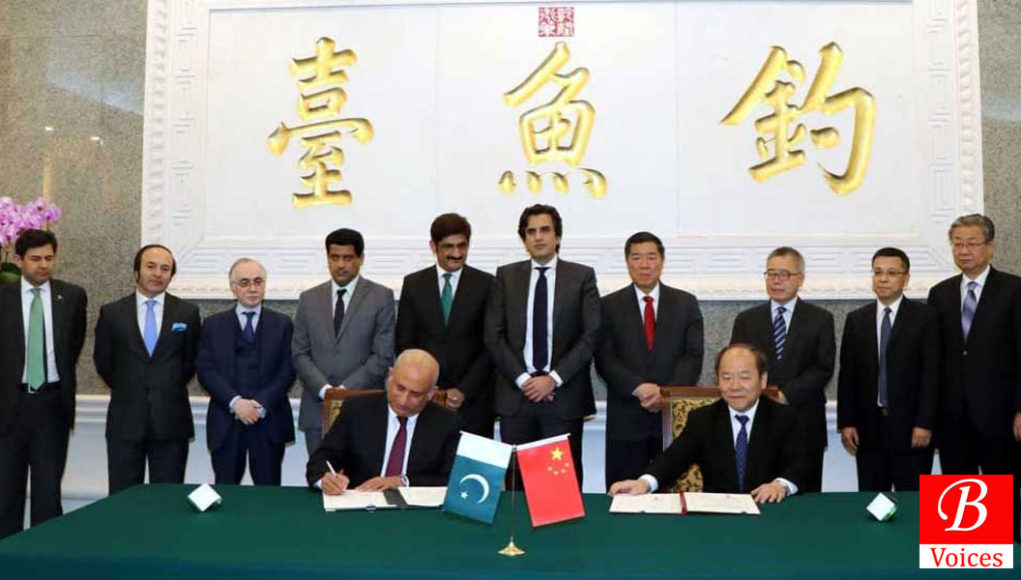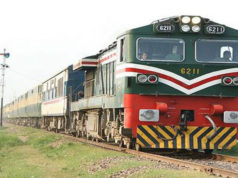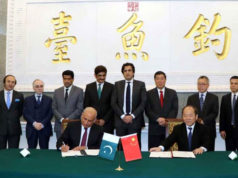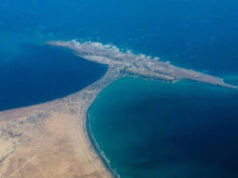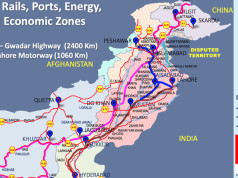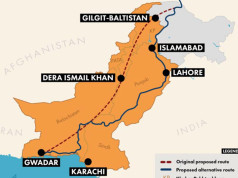Adnan Aamir
The coverage of the Pakistan Democratic Movement’s (PDM) Quetta rally overshadowed another significant development; the opening of the Orange Line Metro Train in Lahore. Built at a cost of $1.6 billion, the Orange Line is the first electricity-run metro train service in Pakistan and a major achievement as a project of the China-Pakistan Economic Corridor (CPEC).
Orange Line in Lahore will cater to 250,000 passengers on a daily basis and will make mobility affordable and convenient in the second largest city of Pakistan. This project was built by China Railway and Norinco, which will also operate it for the next five years. The Punjab government will also pay a subsidy of Rs12 billion per annum, after fixing the price of the ticket at Rs40. Despite political criticism on this subsidy, it is being used to benefit the public.
Read Also: CPEC has not Benefited People of Balochistan
It is good that Lahore now has an effective metro rail project from the CPEC, but what about other provinces? CPEC is a national project, which is under the control of the federal government. The Orange Line was built successfully under CPEC due to the support of the federal government. However, the same government ignored the development needs of other provinces, particularly Balochistan, the most underdeveloped province of Pakistan.
The credit for CPEC in general, and Orange Line in particular, goes to the former PML-N government which focused its energies in Punjab, the main political base of the party. This came at the expense of development in other provinces. Pakistan got CPEC projects because of the Gwadar port but the home province of this port was ignored in reaping the benefits of CPEC in terms of infrastructure development.
Even as 2020 is about to end, there are no plans of bringing the Quetta Mass Transit Project to life
During the PML-N’s government, opposition and civil society raised concerns about Balochistan and other provinces being ignored in the CPEC. The PML-N responded to this criticism with deception; back in 2016, it claimed that the Orange Line was not part of CPEC, whereas the opposite was clearly mentioned in the original CPEC agreements. Now, after the inauguration of this project, both the federal government and China are selling the Orange Line as a success story of CPEC. This proves that previous claims of the PML-N about Orange Line were nothing but a pack of lies.
The Quetta Mass Transit Project was also included in the CPEC on the demand of the provincial government of Balochistan. It was included in CPEC during the 6th Joint Cooperation Committee (JCC) meeting in 2016. However, the very next year, this project was dropped in 7th JCC because the PML-N controlled federal government was not serious about moving ahead with this project. Even as 2020 is about to end, there are no plans of bringing the Quetta Mass Transit Project to life. And so, the people of Quetta cannot have a CPEC-funded metro service like Lahore.
Read Also: The Myth of CPEC’s Western Route
In this context, it is safe to assume that Balochistan missed the boat of CPEC-driven development. It was not just Quetta which failed to get a metro project; Gwadar, the centerstage of CPEC, also missed out on the benefits. Even five years after the inception of CPEC, there has not been any meaningful improvement in the lives of people of the port town. There was no major employment generation. The city still lacks adequate water and electricity supply. Gwadar has a few projects under CPEC, such as New Gwadar Airport and Eastbay expressway, but these projects in no way address the basic socio-economic needs of the people of the city.
The unjust treatment meted out to Balochistan in CPEC by the former government cannot be reversed. The reason is that the early harvest phase of CPEC, which focused on energy and infrastructure, is complete. The remaining phases of CPEC will focus on industrial cooperation and agriculture.
It is interesting that PDM is championing the deprivation narrative of Balochistan. The PML-N is a vocal participant of PDM and driving its anti-establishment narrative. Last month in Quetta, PML-N leaders stole the show while expressing solidarity with the deprived people of Balochistan. However, one must not forget that it was the same PML-N which contributed to the underdevelopment of Balochistan by not allowing the province to benefit from CPEC.
Read Also: Claims of Development from CPEC are Delusions: Senators from Balochistan
Two of the other active participants of PDM – National Party and PKMAP – were partners with the PML-N when it adopted a policy to ignore Balochistan in CPEC. Both of these parties were coalition members of the PML-N in Balochistan and the center. Former president of National Party, late Hasil Bizenjo, became the federal minister for ports and shipping because of Gwadar. Still, the coalition did not address the development needs of Balochistan in any way. Therefore, the people following the developments in Balochistan will find it hard to buy the narrative of PDM.
As mentioned earlier, even the current government cannot reverse what was done to Balochistan in CPEC. However, it can prioritize the development of the province using its own resources. In the last couple of months, the federal government has come up with the mantra of the south Balochistan development package. This can be a good starting point. However, the government should reconsider its name because the term ‘south Balochistan’ is giving misleading hints about dividing the province itself.
The federal government should also clarify how it will fund the development projects under the south Balochistan package. Answering this question can deepen the trust of the people of Balochistan towards the development claims of the PTI government. Otherwise, the south Balochistan package will also be considered as a repetition of the rhetoric deployed by the PMLN.
Share your comments!


